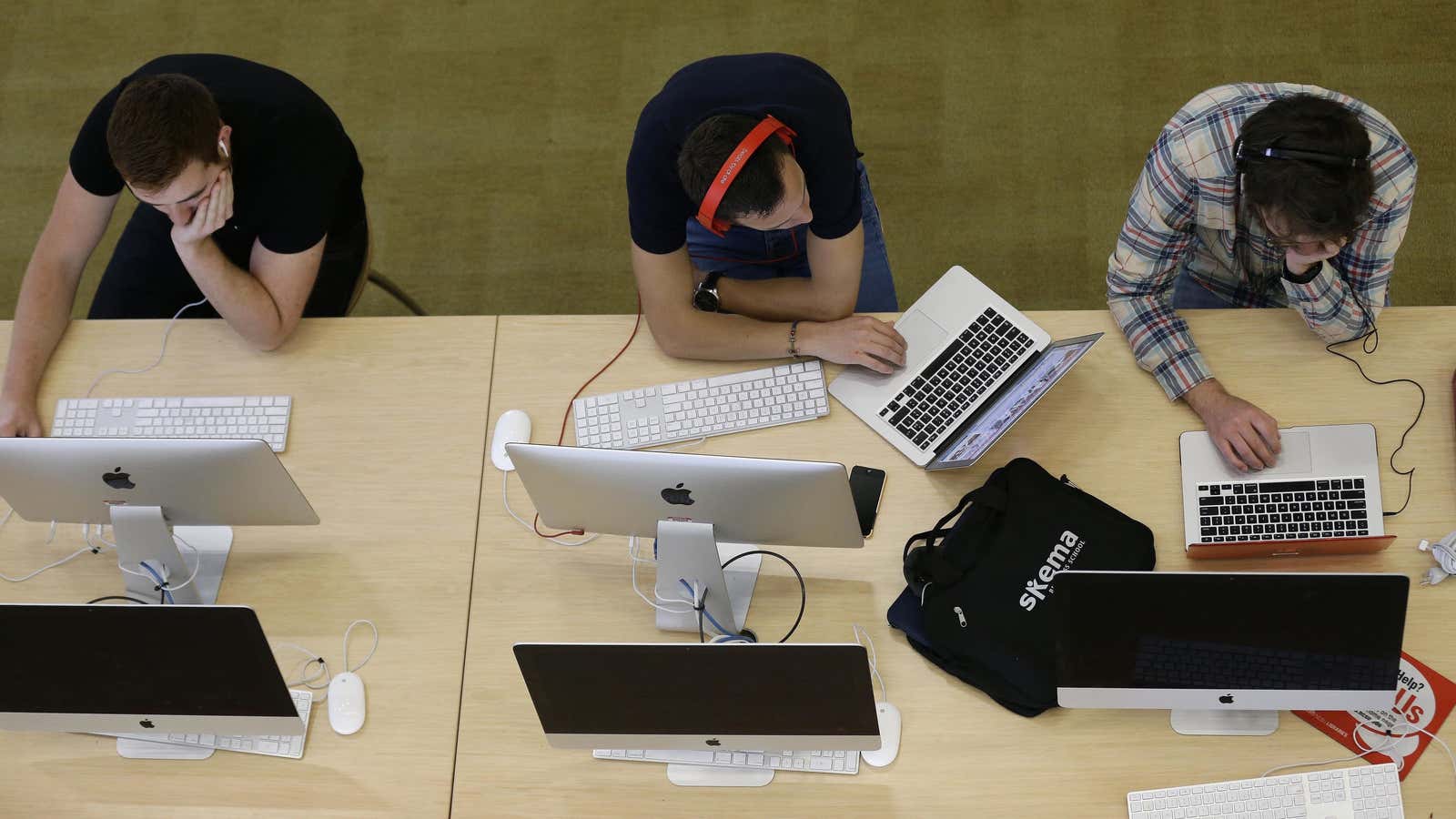In the US, 13.5% of 15-year-olds can distinguish between fact and opinion when trying to interpret a complex reading task. In the UK, it’s just 11.5%.
Those results are both better than the OECD average of 9%, according to the latest results of PISA, or the Programme for International Student Assessment, an international test of math, science, and reading which is administered by the OECD every three years.
“The world continues to change but education systems have a hard time keeping up,” said Andreas Schleicher, head of the OECD’s education unit.
Like in previous years, the top performers hailed from Asia. China 1 and Singapore scored significantly higher in reading than all the other places that participated in the latest test.
The test has recently been adapted, with an increased emphasis on the ability to find, compare, contrast, and integrate information across multiple sources of text. “Reading is no longer mainly about extracting information; it is about constructing knowledge, thinking critically and making well-founded judgements,” according to the report, which was released today.
There are six levels of reading proficiency, and students who scored at the fifth level or above are considered to be able to separate fact from opinion, “based on implicit cues pertaining to the content or source of the information,” according to the report. This is key to the process of “reflecting on content and form,” describing proficiency like this:
Readers can establish distinctions between content and purpose, and between fact and opinion as applied to complex or abstract statements. They can assess neutrality and bias based on explicit or implicit cues pertaining to both the content and/or source of the information. They can also draw conclusions regarding the reliability of the claims or conclusions offered in a piece of text.
Roughly 600,000 students in 79 participating countries and economies completed the PISA test in 2018, representing about 32 million 15-year-olds overall. In 2018, the focus of the test was on reading (it changes every three years).
The test was a “multi-stage adaptive approach,” meaning students were assigned a block of questions: if they did well, the questions got harder and if they performed poorly, they got easier.
